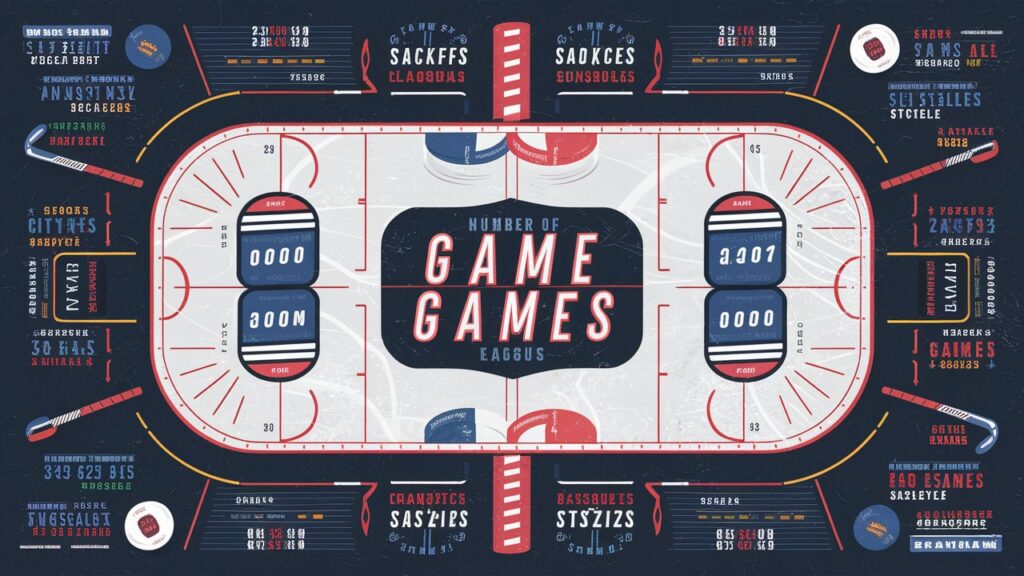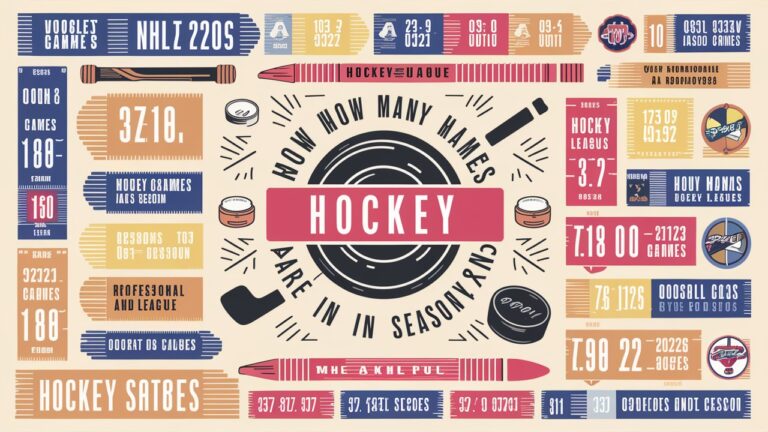Introduction: Understanding the Structure of a Hockey Season
Hockey seasons vary widely depending on the league, level of play, and geographic location. For fans and newcomers alike, understanding how many games are in a hockey season requires diving into the specifics of each league. The National Hockey League (NHL), for example, is the most prominent professional league in North America, but other leagues like the American Hockey League (AHL), collegiate divisions, international leagues, and junior hockey organizations each have their own schedules. This article breaks down the number of games in a season across these leagues, explores factors that influence scheduling, and answers common questions about hockey’s grueling calendar.
NHL Season Structure: The 82-Game Marathon
The NHL regular season consists of 82 games per team, a format that has been in place since the 1995–96 season. These games are split evenly between home and away matches (41 each), with teams competing within their division, conference, and across the league to secure playoff berths. The 82-game schedule is designed to balance competitive fairness, revenue generation, and physical demand on players. The season typically runs from early October to mid-April, followed by the Stanley Cup Playoffs, where 16 teams compete in a best-of-seven elimination format. A team that advances to the Stanley Cup Final could play up to 28 additional playoff games, making the maximum possible games in a season 110 for a single team.
AHL Season: 72 Games of Development and Preparation
The American Hockey League (AHL), the primary developmental league for the NHL, features a 72-game regular season. This slightly shorter schedule allows prospects to acclimate to professional hockey’s demands while managing fatigue. Like the NHL, the AHL playoffs follow the regular season, though fewer teams qualify. The Calder Cup Playoffs mirror the NHL’s best-of-seven structure, adding up to 24 potential games for the finalists. The AHL’s schedule prioritizes player growth, with frequent call-ups to NHL teams influencing roster consistency.
College Hockey (NCAA): Balancing Athletics and Academics
NCAA Division I men’s hockey teams play 34–40 regular-season games, depending on conference schedules and tournaments. The season begins in October and culminates in the Frozen Four championship in April. Division III programs often play fewer games (around 25–30) to prioritize academic commitments. Women’s collegiate hockey follows a similar structure, with top Division I teams like those in the Hockey East Association playing 30–35 games. The NCAA’s focus on balancing athletics and education results in shorter seasons compared to professional leagues.
International Leagues: KHL, SHL, and Beyond
Internationally, hockey seasons differ significantly. The Kontinental Hockey League (KHL), spanning Russia and neighboring countries, schedules 68 regular-season games per team. The Swedish Hockey League (SHL) plays 52 games, while Finland’s Liiga features 60 games. These leagues often have longer breaks for international tournaments like the IIHF World Championships. The KHL’s Gagarin Cup Playoffs add up to 28 games, similar to the NHL’s structure, but the shorter regular season accommodates harsh winter travel and regional preferences.
Junior Hockey: OHL, WHL, and the Road to the Pros
Major junior leagues like the Ontario Hockey League (OHL) and Western Hockey League (WHL) play 68-game regular seasons, with additional playoff rounds. These leagues serve as pipelines to the NHL, emphasizing player development for athletes aged 16–20. The Memorial Cup tournament crowns the Canadian Hockey League (CHL) champion, adding up to 20+ playoff games for top teams. The demanding schedule prepares young players for professional hockey’s rigors while balancing education and family commitments.

Women’s Professional Hockey: PWHL and Growing Opportunities
The Professional Women’s Hockey League (PWHL), launched in 2023, debuted with a 24-game regular season and plans to expand. Earlier leagues like the Premier Hockey Federation (PHF) featured 28-game seasons. Women’s leagues often face challenges like limited funding and arena availability, resulting in shorter schedules. However, the PWHL’s playoffs and potential international tournaments aim to increase visibility and game counts in coming years.
Factors That Influence the Number of Games in a Season
Hockey seasons are not static. Work stoppages, such as the NHL’s 2004–05 lockout (which canceled the entire season) or the 2012–13 lockout (reducing the season to 48 games), dramatically impact schedules. External factors like the COVID-19 pandemic led to abbreviated seasons (e.g., the NHL’s 56-game 2020–21 season). League expansion, collective bargaining agreements, and player safety concerns also influence game counts. For example, the NHL’s addition of the Seattle Kraken in 2021 required schedule adjustments but kept the 82-game framework intact.
Frequently Asked Questions (FAQs)
1. How many games does each NHL team play in a season?
Every NHL team plays 82 regular-season games, with the potential for 28 playoff games if they reach the Stanley Cup Final.
2. Why does the NHL have 82 games?
The 82-game format maximizes revenue, ensures balanced competition, and provides fans with ample opportunities to watch their teams. It has been a staple since the mid-1990s.
3. What’s the shortest NHL season in history?
The 2012–13 season was shortened to 48 games due to a lockout. The 1994–95 season also had 48 games for the same reason.
4. How do college hockey seasons differ from the NHL?
NCAA teams play 25–40 games, prioritizing academic schedules and with shorter playoffs. Scholarships and eligibility rules limit extended seasons.
5. Do AHL teams play fewer games than NHL teams?
Yes. The AHL’s 72-game season is shorter to accommodate player development, frequent call-ups, and less grueling travel.
6. How do international leagues compare to the NHL?
Leagues like the KHL (68 games) and SHL (52 games) have shorter seasons due to regional logistics, weather, and participation in international tournaments.
Conclusion: A Dynamic Landscape of Hockey Schedules
The number of games in a hockey season depends on the league’s goals, player development needs, and external challenges. While the NHL’s 82-game benchmark sets a high bar for endurance, other leagues adapt their schedules to balance competitiveness, health, and logistics. As women’s hockey grows and global leagues evolve, game counts may shift, but the sport’s core appeal—fast-paced, physical, and thrilling action—remains constant. Whether you’re tracking the Stanley Cup or a junior league playoff race, understanding the season’s structure deepens appreciation for hockey’s relentless rhythm.
For the latest updates on your favorite league’s schedule, visit official websites or follow trusted sports news outlets.
